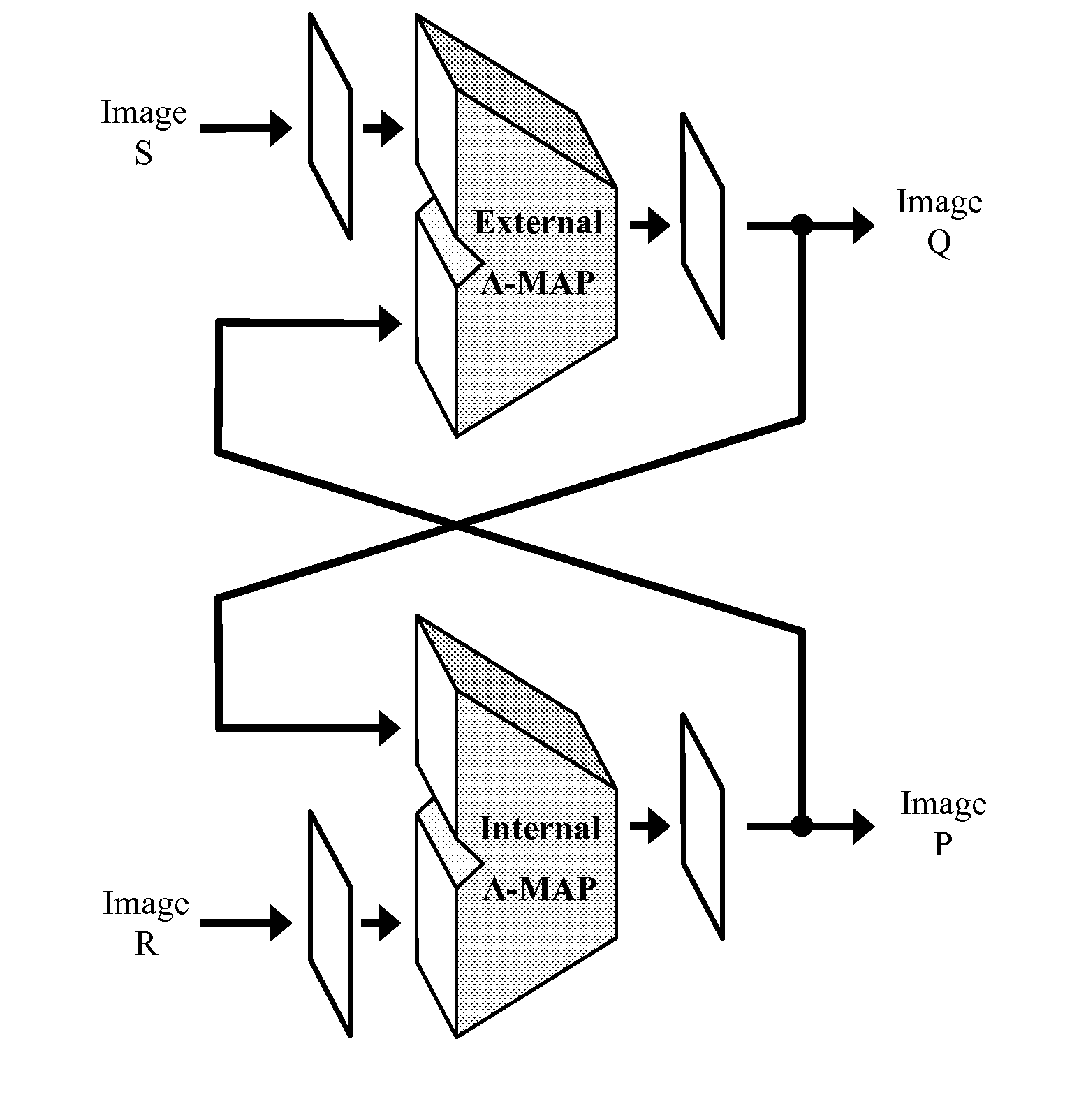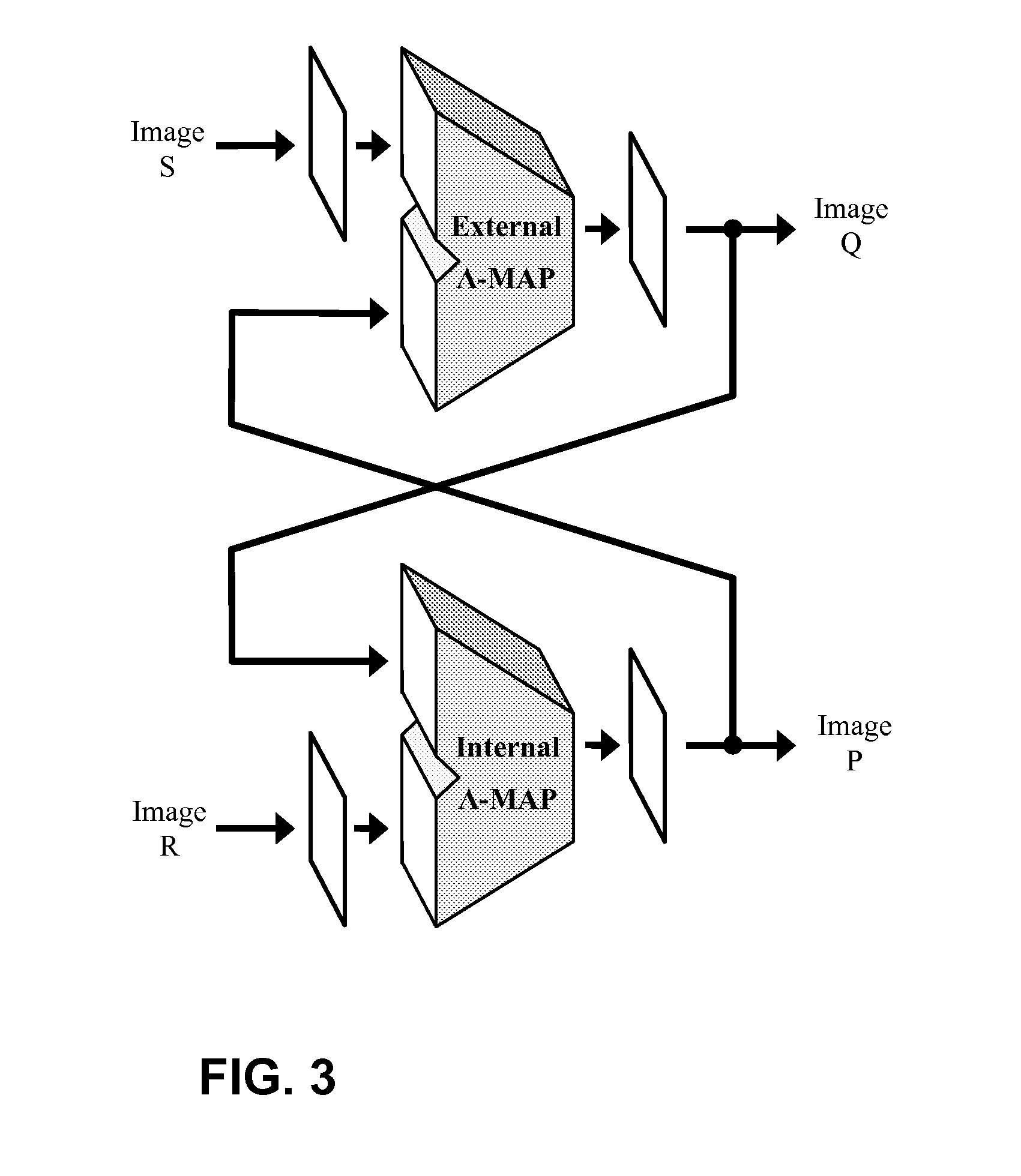Method of generating an encoded output signal using a manifold association processor having a plurality of pairs of processing elements trained to store a plurality of reciprocal signal pairs
a manifold association processor and output signal technology, applied in the field of physiologically realistic models of neurons and neurotransmitters, can solve the problems of limited computer systems that mimic lack of complete and thorough scientific understanding of animal intelligence and human consciousness
- Summary
- Abstract
- Description
- Claims
- Application Information
AI Technical Summary
Benefits of technology
Problems solved by technology
Method used
Image
Examples
example 1
[0346]An exemplary application is a speech recognition device for a personal computer (PC). A microphone connected to the PC provides an input signal to a manifold array processor, while the output is the stream of characters corresponding to the words spoken by the user. The incoming audio signal first undergoes frequency analysis pre-processing such as a windowed Fast Fourier Transform (FFT). This would be followed by a Ψ-MAP classifier / recognizer and then followed by post-processing to write the Ψ-MAP output to a character stream. These calculations could be performed by the main CPU (central processing unit) of the PC itself or on a small separate “daughter” card attached as a peripheral to the main circuit board. The daughter card may contain a single microprocessor or multiple processors and a combination of one or more programmable digital signal processing (DSP) chips.
example 2
Pen Stroke Analysis
[0347]A handheld Personal Digital Assistant (PDA) device may have a touch-sensitive screen that records the pressure of pen strokes on its surface. The recorded result (x(t),y(t)) is a vector valued function defined on a one-dimensional manifold (time). A pre-processing step may scale or normalize the signal by performing arc-length encoding or translating it so that it is centered about its two-dimensional center-of-gravity. The signal may then be used as input to several Ψ-MAPs within a Ψ-MAP array, which analyze it for the presence of various characteristics such as corners or intersections. The outputs of the individual Ψ-MAPs may then be topologically aligned as inputs to a final Ψ-MAP stage using the one-dimensional equivalent of the two-dimensional alignment shown in FIG. 4. This last Ψ-MAP stage in the array may then recognize the topologically aligned inputs and produce a single signal corresponding to a waveform that encodes the bits of an ASCII characte...
example 3
Two-Dimensional Image Encoding
[0348]In some applications, the input is an image, for example, from a CCD camera or imaging array, which generates a digital signal that is then associated with an encoded image, such as a bar code or character stream, where the code may represent a word that identifies or describes the object within the image. Generally, the present invention is applicable to any image or signal that can encode digital data, such as face recognition, handwriting recognition, object recognition, etc. In a face recognition application, a person's social security number can be associated with a bar code in which is encoded the person's image. It should be noted that bar code is used as an example, and other symbols, including one or more alphanumeric characters may be used to encode the image or signal.
PUM
 Login to View More
Login to View More Abstract
Description
Claims
Application Information
 Login to View More
Login to View More - R&D
- Intellectual Property
- Life Sciences
- Materials
- Tech Scout
- Unparalleled Data Quality
- Higher Quality Content
- 60% Fewer Hallucinations
Browse by: Latest US Patents, China's latest patents, Technical Efficacy Thesaurus, Application Domain, Technology Topic, Popular Technical Reports.
© 2025 PatSnap. All rights reserved.Legal|Privacy policy|Modern Slavery Act Transparency Statement|Sitemap|About US| Contact US: help@patsnap.com



